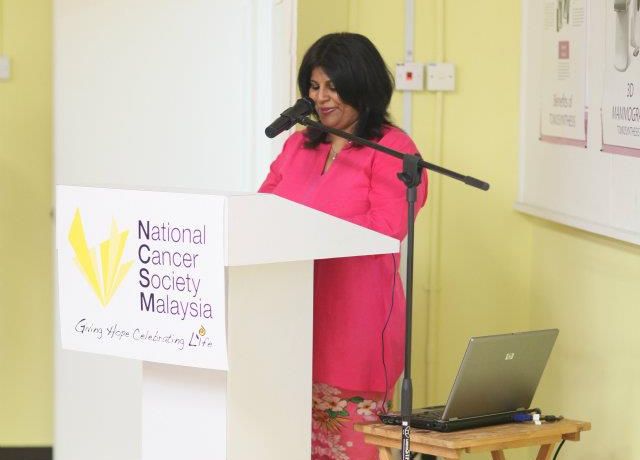KUALA LUMPUR, July 7 — Medical experts are looking to set up a coalition of multi-disciplinary health specialists that could help prevent liver disease, a crucial first step in Malaysia’s broader battle against liver cancer.
Liver cancer is the sixth most common cancer in Malaysia, with 2,149 new cases and 2,050 deaths recorded in 2020, according to data by the Global Cancer Observatory.
Speaking to CodeBlue, National Cancer Society Malaysia (NCSM) president Dr Saunthari Somasundaram said there is an overall need for a spotlight on liver disease, not only cancer, as risk factors associated with liver diseases are ultimately the causative factors for the latter.
“As there has not been much engagement on liver disease within the health community and larger community, we need to build a general reservoir to address liver issues before focusing on cancer.
“Therefore, having a wider coalition around liver disease makes more sense as it engages a greater number of stakeholders – not predominantly cancer – to start collaborations to highlight the health dangers posed by liver disease, establish prevention programmes, and early detection protocols which could subsequently decrease the incidence of liver cancer,” she said.
Universiti Malaya consultant hepatologist Dr Rosmawati Mohamed said hepatocellular carcinoma (HCC), or primary liver cancer, is a complex dual disease that requires attention to both cancer and the underlying liver disease.
“Choosing the optimal liver cancer treatment requires the collaboration of multiple specialities. HCC patients should be discussed in multidisciplinary teams to fully capture and tailor individualised treatment options. Many hospitals at the current time do not have the various specialists needed for managing HCC,” she said.
Dr Rosmawati said a coalition on liver disease should consist of a multidisciplinary team and all relevant stakeholders, including representation from individuals affected by HCC.
The multidisciplinary team should include radiologists and/or pathologists needed for diagnosis, hepatobiliary surgeons for liver resection or transplantation, interventional radiologists for local ablative therapies/ chemoembolisation, hepatologists/ gastroenterologists to assess and treat liver cirrhosis/liver disease, support staff and palliative care providers for best supportive care.
Dr Rosmawati said discussions are underway to form a proposed “My Commitment to Prevent, Care and Control HCC” Coalition. The immediate goal of the alliance is to develop a strategic road map to enhance prevention, early detection, care, and control of HCC in Malaysia.
“This coalition will bring together a group of like-minded clinicians to work in partnership to stimulate best practices on HCC prevention and early detection and influencing policies in support of patient access to enhanced standards of care which can improve the survival of patients diagnosed with HCC,” she said.
Citing Washington-based Global Liver Institute’s Liver Cancer Council as an example, Dr Saunthari said the aims of a liver disease coalition in Malaysia should resemble goals established internationally.
This includes reducing disparities in diagnosis and treatment access as well as advance policy and advocacy to support research, access, and information for those impacted by liver cancer.
“The liver disease coalition in Malaysia should also raise the dialogue around liver disease to decrease the stigma and improve lives of people living with liver disease,” she said.
Dr Saunthari noted that NCSM currently does not have programmes directly related to liver cancer. However, its general support programmes (psychosocial support, nutritional support, helpline) are open to liver cancer survivors.
“Nevertheless, we would be interested in being party to any initiative,” she said.
Several initiatives have been carried out over the past three decades to address issues pertaining to liver diseases in Malaysia.
The National Hepatitis B Vaccination Programme that began in 1989 has dramatically reduced the prevalence of hepatitis B, which consequently, will result in a reduction in hepatitis B-related liver cancer.
More recently, the Ministry of Health in 2018 introduced a unitary strategy by introducing a standard treatment for hepatitis C virus (HCV) infection in public hospitals nationwide. However, only a small number of HCV-infected individuals are known in Malaysia, Dr Saunthari said.
“Roughly only 10 per cent of HCV have been diagnosed and have been targeted for treatment within government facilities. Malaysia has to steeply ramp up treatment to reach WHO (World Health Organization) 2030 targets,” she said.
The WHO’s global hepatitis strategy aims to reduce new hepatitis infections by 90 per cent and deaths by 65 per cent between 2016 and 2030. There are five main strains of the hepatitis virus – A, B, C, D and E, with hepatitis B and C identified as strains that cause the most deaths. An estimated 325 million people worldwide live with hepatitis B and C.
While hepatitis B virus (HBV) and HCC remain the main risks for liver disease, Dr Saunthari said the changing etiology — or cause — for HCC is a reason for concern.
The global rise in incidence of nonalcoholic fatty liver diseases (NAFLD) meant it has become an emergent factor for liver disease in Malaysia due to the nation’s high incidence of obesity and diabetes. “Nonalcoholic steatohepatitis-induced HCC will ultimately change the landscape of liver cancer in Malaysia,” she said.
Dr Rosmawati said fatty liver disease is now the commonest liver disease Malaysia and is rapidly becoming an important risk factor for liver cancer with the latest data from Universiti Malaya Medical Centre (UMMC) showing that it’s the commonest cause of liver cancer (accounting for 42 per cent of all new liver cancer cases) after chronic hepatitis B (accounting for 44 per cent of all new liver cancer cases).
“Screening for hepatitis B, hepatitis C, fatty liver disease and alcohol excess will need to include collaboration with the primary care providers to ensure timely diagnosis of the risk factors for liver cancer and identifying those at high-risk for liver cancer development.
“Early detection of HCC will allow curative treatment to be offered,” Dr Rosmawati said.









